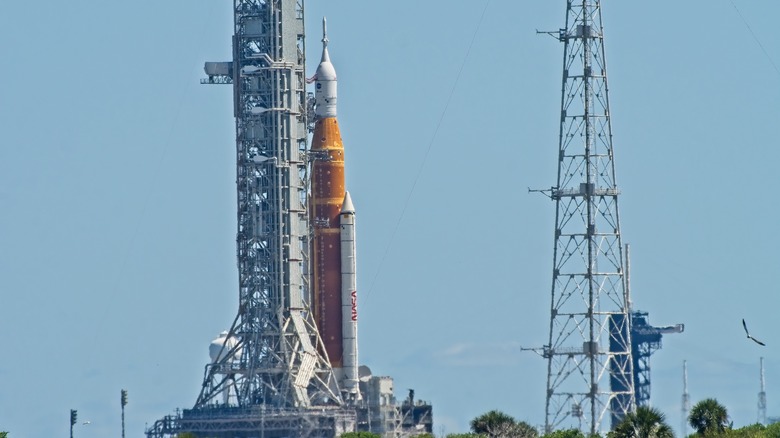When And How To Watch NASA's Artemis 1 Launch This Week
NASA have decided on a date and time for the Artemis 1 launch, and interested parties around the world can watch it quite easily. The Artemis 1 launch has been delayed several times — most recently due to the risks posed by Tropical Storm Nicole. Those on the East Coast who are wanting to see the rocket blast off will be in for a late night, while Europeans will have to set their alarms, as the launch window is scheduled to begin at 1:04am ET on November 16, according to NASA.
The Artemis Project is NASA's most ambitious series of missions in decades. Its initial aim is to put another human on the moon by 2025, but the plans stretch far beyond that. The U.S. space agency expects to achieve several firsts during the Artemis series of missions, including landing the first woman and the first person of color on the lunar surface. Scientists also plan to establish a moon base, which will allow for long-term stays and studies of Earth's largest natural satellite. Arguably, the most ambitious goal is the "Lunar Gateway" — an ISS-like base orbiting the moon which could be used as a resupply point for future trips to Mars and beyond. The 2025 goal in itself is historic, as a human hasn't landed on the moon since 1972.
How to watch the Artemis 1 launch
The easiest way to watch NASA's Artemis 1 Launch on Wednesday morning is through the agency's official YouTube channel. You don't even have to search for it, as we've embedded the feed above this story. NASA says that if you live in Florida, you can also just look up if the sky happens to be clear enough. People in Orlando, Kissimmee, and Port St. Lucie will be able to see Artemis 1 between 10 and 20 seconds following takeoff. It will take 30 to 40 seconds before the rocket is visible in places like Tampa, Jacksonville, and West Palm Beach. Residents of southern Georgia might also get a glimpse at around the same time as people in Miami. So if you live in Valdosta, look up around one minute after lift off.
The mission itself is a test flight of NASA's Orion spacecraft, and is expected to take between 26 and 42 days. Orion is the same kind of spacecraft that the next people to set foot on the moon will be traveling in. The spacecraft will take between eight and 14 days to reach the moon, where it will perform one and a half orbits before heading back to earth. The flight is uncrewed, but during this mission it will travel further than any spacecraft "built for humans" has ever ventured.
